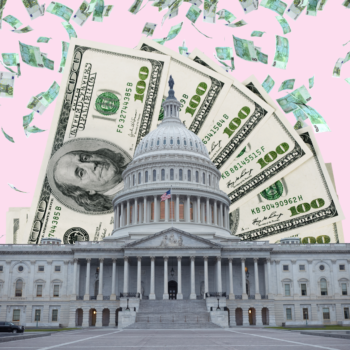|
|
Banks have significantly transformed how individuals and businesses manage their finances. With technological advancements, services like online banking, mobile payments, and digital transactions have become the norm, making financial management more efficient and accessible than ever before. They play a vital role in the global economy by facilitating everyday transactions and funding large-scale projects and enterprises across various industries.
However, what often remains overlooked is the profound impact these financial institutions can have on the environment. Many banks are increasingly being scrutinized for their contribution to sustainability efforts. For instance, banks that finance fossil fuel extraction and deforestation activities directly support industries known for their adverse environmental effects. This financial backing enables projects that lead to increased carbon emissions, loss of biodiversity, and destruction of ecosystems.
Fortunately, the tide is turning. As consumers grow increasingly informed about the ecological impact of their financial choices, there’s a surging demand for banks that place sustainability and environmental conservation at the forefront of their operations. This consciousness shift is prompting a growing number of financial institutions to adapt and redefine their business models to meet these evolving consumer expectations. They strive for greater transparency in their investment practices, making it clear where customers’ money is being used and ensuring it aligns with sustainable and ethical goals.
In this piece, we spotlight the leading eco-friendly banks across Oceania, North America, and Europe, delving into their groundbreaking initiatives and steadfast dedication to safeguarding our planet. We’ll also explore how the banking sector impacts the environment and celebrate the burgeoning shift towards sustainability in finance. Furthermore, we’ll offer actionable insights for other financial institutions looking to embark on a greener path, suggesting strategies to foster a banking ecosystem that champions environmental stewardship.
Key Takeaways
- Banks play a significant role in environmental degradation by financing environmentally harmful industries.
- Sustainable banks prioritize environmental, social, and governance (ESG) criteria in their operations and investments.
- The greenest banks in Oceania include Bank Australia and Kiwibank, while North America features TD Bank and Bank of the West. In Europe, Triodos Bank and ASN Bank stand out.
- Promoting sustainable banking practices is crucial for mitigating climate change and fostering a greener future.
How Banks Contribute to Environmental Degradation
While banks have revolutionized how we handle money, many contribute to environmental degradation primarily through financing activities that support industries with high carbon emissions, deforestation, and pollution. This includes funding for fossil fuel extraction, mining operations, and large-scale agriculture. Additionally, banks may invest in companies with poor environmental records, further exacerbating the problem.
A striking report titled “Banking on Climate Chaos,” prepared by a coalition of climate advocacy groups, reveals the world’s leading commercial and investment banks’ substantial financial support to the fossil fuel industry. Since the landmark Paris Agreement in 2016, 60 financial giants have invested a staggering $5.5 trillion into fossil fuels from 2016-2022.

Image Source: https://www.bankingonclimatechaos.org/
The report points out the top contributors to fossil fuel financing, with JPMorgan Chase leading the pack at $434.1 billion, followed by Citi at $332.9 billion, and Wells Fargo closely behind with $316.7 billion. These figures highlight the vast sums of money flowing from prestigious banks into sectors widely acknowledged as among the most significant contributors to climate change.

Image Source: https://www.bankingonclimatechaos.org/
Adding to the concern, a 2020 study conducted by Oxfam France sheds light on the environmental impact of the French banking sector. It found that, within just a year, the combined greenhouse gas emissions resultant from the financing and investment activities of France’s six major banks – BNP Paribas, Crédit Agricole, Société Générale, BPCE, La Banque Postale, and Crédit Mutuel – amounted to more than 3.3 billion tons of CO2 equivalent. These emissions are 7.9 times greater than the total annual emissions of France itself.
The challenge of holding banks accountable for their environmental impact is exacerbated by flaws within the carbon market system, as detailed by Generation Climate Europe. This system, designed to regulate emissions through quotas and penalties, falls short in effectively motivating significant change among large financial actors.
In theory, the carbon market should be a powerful tool for limiting greenhouse gas (GHG) emissions, penalizing ‘big polluters’ by imposing a cost on excessive emissions while rewarding those who pollute less. However, the current implementation suffers from leniency; the quotas are too generous, failing to push organizations toward meaningful environmental action.
A critical oversight in this system is its exclusive focus on scope 1 and 2 GHG emissions – direct emissions from owned or controlled sources and indirect emissions from the generation of purchased energy, respectively. While these measures account for a portion of an institution’s carbon footprint, they overlook the more substantial impact found in scope 3 emissions. Scope 3 encompasses all other indirect emissions in a company’s value chain, including investments. For banks, this is where the bulk of their environmental impact lies.
By ignoring scope 3 emissions, the current carbon market system allows banks to sidestep responsibility for their most significant source of pollution: their financial investments in fossil fuels and other environmentally harmful projects. If scope 3 were included, banks would face a more accurate environmental impact assessment, potentially incurring costs for their investments in industries that contribute heavily to carbon emissions.
Understanding Green Banks
The silver lining in the financial sector’s journey towards sustainability is that several banks are already taking proactive steps to mitigate their environmental impact, well ahead of regulatory mandates. These forward-thinking institutions, known as green, sustainable, or ethical banks, have integrated the pursuit of environmental stewardship into their core operational philosophy without compromising profitability.
Green banks distinguish themselves by adopting a holistic approach to banking. They prioritize financing projects and companies that contribute positively to the environment, such as renewable energy initiatives, sustainable agriculture ventures, and green technology innovations. This commitment extends to their internal operations. Many of these banks champion eco-friendly practices within their walls, from reducing energy consumption and embracing digital over paper-based processes to investing in sustainable office building designs.
Furthermore, green banks often adopt transparent reporting practices, allowing customers and stakeholders to see the direct impact of their investments. This openness builds trust and empowers individuals and businesses to make informed decisions aligned with their values.
By leading with these principles, green banks serve as role models for the rest of the financial industry. They demonstrate that integrating environmental considerations into banking is feasible and beneficial for business. Their approach challenges the traditional banking model and lays a blueprint for how banks can operate harmoniously with the planet.
Identifying the Greenest Banks in Oceania, North America, and Europe
In Oceania, North America, and Europe, several banks have set new standards in green banking by prioritizing ethical practices, environmental conservation, and social responsibility. Here’s a closer look at some of the greenest banks within these regions, showcasing their commitment to sustainability.
Oceania
1. Bank Australia
Considered a pioneer in responsible banking in Oceania, Bank Australia, formerly known as Bankmecu, is a customer-owned bank committed to sustainability and ethical banking practices. It prioritizes lending to renewable energy projects, sustainable agriculture, and community development initiatives. It also purchases carbon offsets to become carbon neutral and invests in conservation projects.
The bank aims to become net zero by 2035 and to achieve that goal, its strategy includes encouraging customers to build sustainable homes through its ‘Clean Energy Home Loan,’ funding regenerative products and services worth $1.5 billion, and corporate conservation innovation.
2. Kiwibank
In New Zealand, Kiwibank supports local initiatives and businesses contributing to environmental sustainability. It has several programs to reduce operational carbon emissions by 40% in 2025, including reducing electricity use and waste and improving fleet and travel.
The bank actively supports green financing by offering favorable interest rates for loans dedicated to sustainable ventures. Additionally, it has collaborated with the sustainability-focused fintech company Cogo, empowering business clients using Xero accounting software. This partnership gives these customers access to the Cogo Business Carbon Manager app, a tool designed to effortlessly track and comprehend their business’s carbon footprint, facilitating a more informed approach to environmental responsibility.
3. Bendigo and Adelaide Bank
This Australian bank focuses on creating a sustainable future through community engagement and support for green energy projects. It offers environmentally friendly loans for homes and vehicles that meet specific green criteria.
Bendigo and Adelaide Bank is also committed to transparent reporting, adhering to various evolving frameworks. It collaborates with government bodies and crucial stakeholders to drive climate and conservation efforts. This includes engaging with organizations like the Australian Banking Association, the Net-Zero Banking Alliance (NZBA), and the United Nations Global Compact, demonstrating its comprehensive commitment to fostering a sustainable future.
4. Westpac
Westpac distinguishes itself through a holistic sustainability strategy that goes beyond reducing its environmental footprint by embracing renewable energy, water conservation, and green building projects. Striving towards becoming a net-zero, climate-resilient, and nature-positive institution, Westpac focuses on developing sustainable finance taxonomies & solutions along with natural capital strategies.
Further emphasizing social responsibility, Westpac champions financial inclusivity for indigenous communities, ensuring diversity in sourcing and supporting community initiatives via grants and scholarships.
5. ASB Bank
Another New Zealand bank committed to sustainability, ASB Bank works on reducing its greenhouse gas emissions and supports community projects geared towards environmental preservation. Central to its climate change strategy is the ambition to foster a climate-resilient future, benefiting customers, communities, and operational frameworks alike.
The bank actively collaborates with customers on environmental matters, offering financial solutions tailored to support sustainable practices. With its achievement as a Toitū Envirocare net carbon zero certified entity, ASB sets a high standard in corporate environmental responsibility. Moreover, its status as a Living Wage NZ Accredited employer ensures fair wages for contractors and subcontractors at ASB sites, highlighting the bank’s broader commitment to ethical practices beyond its immediate operations.
North America
1. Beneficial State Bank
Beneficial State Bank is a US bank renowned for prioritizing social equity and environmental stewardship in its lending practices. Focusing on fair banking, it sets a benchmark for ethical finance in North America.
To better understand and manage its environmental impact, the bank collaborates with Blue Strike Environmental, quantifying direct emissions from its energy consumption and indirect emissions from employee commutes, business travel, and office supplies. To mitigate these impacts, it invests in carbon offsets through partnerships with Carbon Lighthouse and Forterra’s Carbon Capture Program, effectively removing them from circulation. Moreover, Beneficial State Bank champions clean energy financing, actively avoiding investments in fossil fuels such as coal, oil, and gas, further underscoring its dedication to a healthier planet.
2. Amalgamated Bank
Based in the U.S., Amalgamated Bank is committed to socially and environmentally responsible banking practices, offering eco-conscious investment options and operations emphasizing carbon neutrality.
The bank is a leader in climate action, consistently setting and meeting ambitious targets for net-zero emissions in financing and operations. It supports forest and wildlife conservation through carbon offset purchases, powers its offices with 100% clean energy where possible, and transparently reports financed emissions using the PCAF methodology. Firm in its pledge against financing fossil fuel companies, Amalgamated dedicates 32% of its loan portfolio to climate-positive solutions. Recognized as a B Corporation and an early adopter of the Net Zero Banking Alliance and the UN Principles for Responsible Banking, the bank solidifies its stance as a pioneer in sustainable finance.
3. Vancity
Canada’s largest community credit union, Vancity, invests heavily in environmental sustainability projects. Its support extends to clean energy development, organic farming, and green businesses, with firm commitments to social justice and financial inclusivity.
Targeting net-zero emissions by 2040 for its mortgages and loans, Vancity has maintained carbon neutrality since 2008. It steadfastly avoids investing in the fossil fuel sector, including oil, gas, or coal companies and refrains from providing investment banking services to such entities. Emphasizing responsible investing, the credit union integrates environmental, social, and governance criteria with financial analysis to curate its Socially Responsible Investment (SRI) mutual fund offerings. Further demonstrating its commitment to a sustainable future, Vancity has implemented a climate risk strategy that promotes shifting away from fossil fuels towards renewable energy sources.
4. Sunrise Banks
Based in St. Paul, Minnesota, Sunrise Banks seeks to create financial inclusion while engaging in environmentally sustainable practices. It provides services promoting affordable housing, community development, and eco-friendly initiatives.
To reduce its environmental impact, the bank commits to tracking the carbon emissions from its loan portfolio and operations through the Partnership for Carbon Accounting Financials (PCAF) framework. A proud member of the Global Alliance for Banking on Values (GABV), Sunrise Banks aligns with other financial bodies aiming to transform banking into a force for positive change. Emphasizing its commitment to social responsibility, the bank donates at least 2% of its net income annually to corporate donations and sponsorships. Additionally, it champions volunteerism among its staff by offering 40 paid hours each year for charity work and community service.
Europe
1. Triodos Bank
Known globally for its dedication to ethical banking, Triodos Bank finances projects that benefit people and the planet. With a belief that banks should be open, it transparently shows customers where their money goes, ensuring it supports renewable energy, organic farming, social housing, and more.
As of 2023, Triodos Bank has successfully steered clear of 996 kilotons of CO2 emissions through its sustainable finance practices. Its commitment to ethical banking has garnered recognition, including accolades such as Best Ethical Financial Provider (2023), Best Investments Provider (2022), and The Queen’s Awards for Enterprise in Sustainable Development (2020). Additionally, Triodos Bank prides itself on being a B Corporation, further cementing its status as a leader in sustainable and responsible banking.
2. GLS Bank
GLS Bank, Germany’s pioneering social-ecological universal bank, exclusively supports projects and companies that meet rigorous social and environmental sustainability benchmarks. It channels financing into sustainable ventures across six sectors: Renewable Energies, Education & Culture, Social & Health, Nutrition, Housing, and Sustainable Economy.
The bank’s dedication to sustainability and social responsibility is reflected in its achievements. By 2021, GLS Bank has powered 42,957 households with renewable energy, facilitated the creation of 2,207 school and preschool spots, contributed to 730 new nursing home places, and ensured that 77.2% of the organic farmland it supports is certified by esteemed organizations like Bioland or Demeter.
3. Banca Etica
Banca Etica, Italy’s foremost ethical bank, champions transparency and ethics in the finance sector by providing loans to entities committed to social justice and environmental sustainability.
At Banca Etica, transparency is the foundation of all operations, ensuring funds from customers and investors are utilized responsibly. Investors must endorse the bank’s Charter principles via a declaration emphasizing the ethical origin and application of their funds. Banca Etica is also one of the few banks in the world to disclose every loan it issues on its website, including recipient details, funding amounts, and financing types, offering stakeholders clear insights into how their investments foster social and environmental impact. Additionally, its annual Impact Report delves into the bank’s Social and Environmental Assessments, offering a comprehensive overview of its activities and achievements in fostering sustainable development.
4. The Co-operative Bank
Based in the UK, The Co-operative Bank is known for its customer-led Ethical Policy, which guides its lending practices. It avoids financing fossil fuel extraction and deforestation activities while supporting renewable energy and conservation efforts.
Committed to sustainable development, the bank has transparently reported its greenhouse gas (GHG) emissions annually since 1998, calculating direct GHG outputs in carbon dioxide equivalent (tCO2e) according to current UK guidelines. Achieving carbon neutrality in 2007, The Co-operative Bank actively pursues further emission reductions by sourcing 100% renewable energy, achieving zero waste to landfill through recycling initiatives, and fostering flexible working arrangements among its employees to lessen travel-related environmental impacts.
What Do These Green Banks Share in Common?
The common thread among the banks mentioned above across Oceania, North America, and Europe is their dedication to principles of sustainability that guide their operations, investments, and loan procedures. Here are some key points about their practices:
- Ethical Investment: Refusal to fund fossil fuel projects, deforestation, or industries harmful to the planet. Instead, they channel funds into renewable energy, organic farming, social housing, and other projects beneficial to society and the environment.
- Transparency: These banks often provide detailed reports on where customer deposits are used, ensuring alignment with conservation and social responsibility values.
- Community Focus: Many engage directly with their communities to support local initiatives, whether through loans to small green businesses, community development projects, or financial literacy programs.
- Operational Sustainability: Efforts to reduce their carbon footprints through eco-friendly building practices, energy efficiency measures, and in some cases committing to carbon neutrality.
- Innovative Financial Products: Offering products like green mortgages, eco-conscious loans, and investments that incentivize sustainable development and energy efficiency.
How Other Banks Can Follow to Promote a Greener Banking System
As demonstrated by the green banks mentioned above, Banks have the power and responsibility to shape a sustainable future through direct operations and by influencing economic activities worldwide. Here are strategies for how other banks can follow suit to promote a more sustainable banking system:
- Integrate Sustainability into Core Business Strategies: Banks should embed sustainability goals into their business models, ensuring that all lending, investment, and operational decisions are examined through an environmental and social lens. That includes setting clear targets for reducing carbon emissions, financing green projects, and avoiding investments in industries harmful to the planet.
- Enhance Transparency: Adopting a transparent approach to reporting on financial activities can significantly enhance accountability. Banks should disclose their financed emissions, utilizing frameworks like the Partnership for Carbon Accounting Financials (PCAF), and publish detailed reports on their sustainability initiatives and progress towards set goals. Transparent reporting empowers consumers to make informed decisions about where to bank.
- Foster Sustainable Products and Services: Developing financial products that encourage sustainable practices among clients can lead to widespread environmental benefits. This could include offering lower interest rates for green loans, creating investment funds dedicated to renewable energy projects, or providing advisory services to help businesses reduce their environmental footprints.
- Collaborate with Stakeholders: Collaboration between banks, governments, regulatory bodies, and non-governmental organizations (NGOs) is crucial in promoting sustainability in the financial sector. By working together, these entities can establish standards and guidelines for responsible banking, share best practices, and develop innovative solutions to common challenges.
- Commit to Education and Advocacy: Banks should educate their employees and customers about the importance of sustainability. Internal training programs can equip staff with the knowledge to make environmentally responsible decisions. At the same time, public awareness campaigns can highlight individuals’ and businesses’ role in achieving a sustainable future.
- Achieve Operational Sustainability: Reducing the environmental impact of a bank’s operations is fundamental. This can be achieved by implementing energy-efficient technologies in office spaces, sourcing renewable energy, and reducing waste by promoting digital banking solutions. Furthermore, banks can implement green building standards for new and existing buildings to reduce their carbon footprint.
- Support Climate Risk Management: Banks should assess and manage the financial risks associated with climate change within their lending and investment portfolios. This involves developing frameworks to identify, evaluate, and mitigate climate-related risks, ensuring that both the bank and its clients are better prepared for the impacts of climate change.
- Encourage Employee Involvement: Empowering employees to contribute to sustainability goals can foster a culture of environmental responsibility within the institution. Banks can set up green teams or committees focused on identifying opportunities for sustainability improvements, encourage participation in local environmental initiatives, and recognize and reward employees who make significant contributions to sustainability efforts.
- Set an Example of Social Responsibility: Beyond environmental measures, sustainable banking also entails addressing social inequalities. Banks can demonstrate social responsibility by ensuring fair labor practices, promoting financial inclusion, investing in local communities, and supporting projects that provide social benefits such as affordable housing and education.
- Join Global Initiatives: Participation in global sustainability frameworks and alliances can enhance a bank’s commitment to sustainable banking. Becoming signatories to principles such as the UN Principles for Responsible Banking, joining networks like the Global Alliance for Banking on Values (GABV), or committing to initiatives like the Net Zero Banking Alliance can provide banks with guidance, support, and recognition in their journey toward sustainability.
Conclusion
In a world facing urgent environmental challenges, the role of banks in promoting sustainability cannot be overstated. The greenest banks in Oceania, North America, and Europe lead by example, demonstrating that profitability and environmental responsibility can go hand in hand. By supporting these institutions and advocating for systemic change, we can create a more sustainable banking system that benefits both people and the planet.
Frequently Asked Questions
Green banks prioritize environmental, social, and governance (ESG) criteria in their operations and investments. They support renewable energy, sustainable agriculture, and community development while avoiding financing activities harmful to the environment.
Banks contribute to environmental degradation through financing activities that support industries with high carbon emissions, deforestation, and pollution. This includes funding for fossil fuel extraction, mining operations, and large-scale agriculture.
Consumers can support green banking initiatives by choosing to bank with institutions that prioritize sustainability and ethical practices. They can also advocate for transparency and accountability in banking operations and promote awareness of green financing options within their communities.
Policymakers are crucial in promoting sustainable banking practices by implementing regulations that incentivize green financing and penalize environmentally harmful activities. They can also support initiatives that promote transparency, disclosure, and accountability in banking operations.
Businesses can benefit from partnering with green banks by accessing financing options that support their sustainability goals. Green banks often offer favorable terms for investments in renewable energy, energy efficiency, and environmentally friendly technologies, which can help businesses reduce their environmental footprint and enhance their corporate social responsibility efforts.












